Strong legs come in handy more often than you think.
Climbing stairs, dancing at weddings, chasing the bus, or just holding your balance in heels all depend on the muscles in your thighs and calves. When these muscles are strong, everything feels easier and more stable.
However, when they’re NOT, even a short walk can feel like a workout.
Instead of letting weak legs slow you down, it helps to know that training them can actually be simple.
With just a few beginner-friendly moves, you can start building up your quads (front of your thighs) and calves (back of your lower legs).
In this blog post, you’ll find easy routines that make leg training simple, whether you’re at home or in the gym
Why Train Quads and Calves Together?
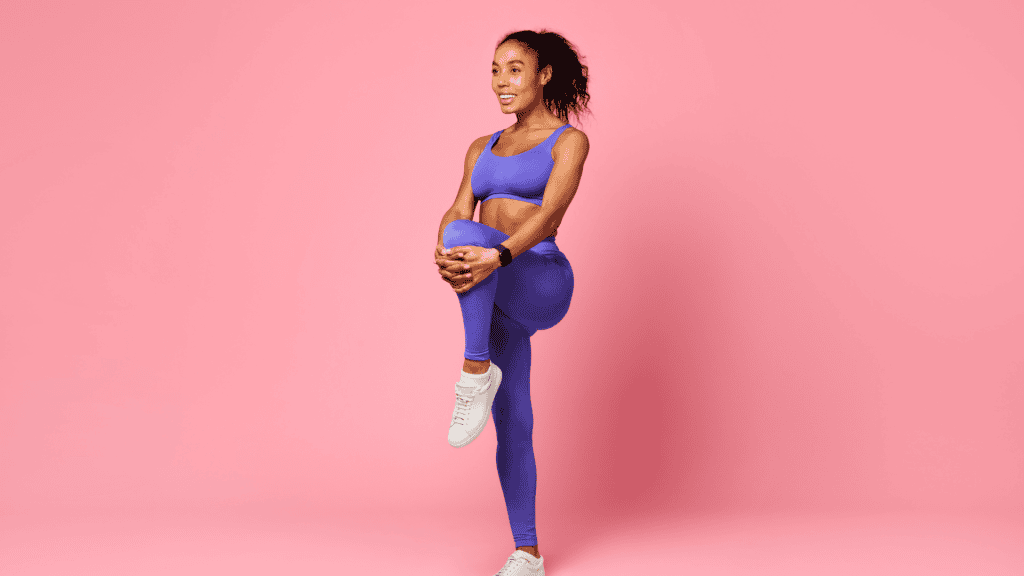
Your quads are the muscles at the front of your thighs. They help you stand up from a chair, walk forward, squat down, and stay balanced on your feet.
Meanwhile, your calves are found on the back of your lower legs. They give you the push you need to walk, climb stairs, or even just keep your balance while standing.
Both muscle groups work together all day long, whether you’re running errands or just heading to the kitchen.
Training them at the same time makes sense, since they team up for almost every step you take. When both your quads and calves are strong, your legs feel steadier, move more smoothly, and recover faster after activity.
Everyday things (like walking, dancing, or even standing in line) start to feel easier and take less effort.
On top of that, working these muscles together saves you time.
There’s no need to split your workouts or double your effort. A routine that targets both your thighs and calves helps you get stronger in less time.
That means you can get more done, feel more balanced, and still fit your workout into a busy week.
Effective Exercises for Stronger Quads and Calves
Building stronger legs is easier than you might think.
Focusing on just a handful of smart, effective moves can help you work both your quads and calves without feeling overwhelmed.
These simple exercises can be done at the gym or even at your own home.
Here’s how to get started:
Bodyweight Squats with Calf Raise at the Top
Start by standing with your feet shoulder-width apart. Lower into a squat like you’re sitting in a chair. Keep your chest up and knees in line with your toes.
Once you push back up to standing, lift your heels off the ground and rise onto your toes for a calf raise. Pause for a second at the top, then lower your heels back down.
Bodyweight squats with calf raise at the top works your thighs and gives your calves a solid burn at the same time.
Step-Back Lunges with Heel Lift
Stand tall with your feet together. Step one foot back into a lunge, bending both knees until your back knee hovers just above the floor.
As you return to standing, drive through your front heel and lift your back heel for a quick calf raise.
Then switch sides. This move keeps both the front and back of your legs engaged while also building balance.
Wall Sit + Pulse + Calf Raise Combo
Lean your back against a wall and slide down until your legs are bent at a 90-degree angle. Hold that position for a few seconds, then do small pulses, just moving an inch up and down.
After that, lift your heels while keeping your back and hips against the wall to do a calf raise. Keep holding as long as you can.
This one might feel like a slow burn, but it works everything from your thighs to your lower legs.
Dumbbell Goblet Squats (Optional Add-On)
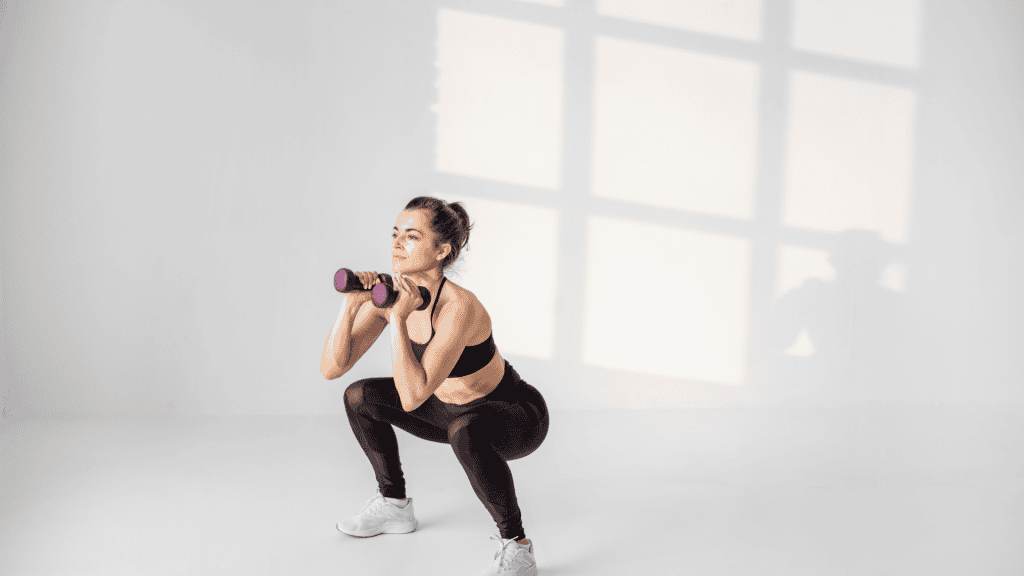
Hold a dumbbell close to your chest with both hands. (like you’re hugging it)
Then, stand with your feet slightly wider than shoulder-width apart. Lower into a squat by pushing your hips back and keeping your back straight. Pause at the bottom, then push through your heels to stand.
You can add a calf raise at the top if you want to hit both muscle groups in one rep.
This is a great way to add weight without overcomplicating the move.
Standing Calf Raises (Single or Both Legs)
Stand tall with your feet hip-width apart. Slowly lift your heels and rise onto the balls of your feet. Hold at the top for a second, then lower back down with control.
To make it harder, try doing this one leg at a time. This move looks easy, but by the second round, your calves will definitely let you know they’re working.
Jump Squats or Low-Impact Calf Jumps
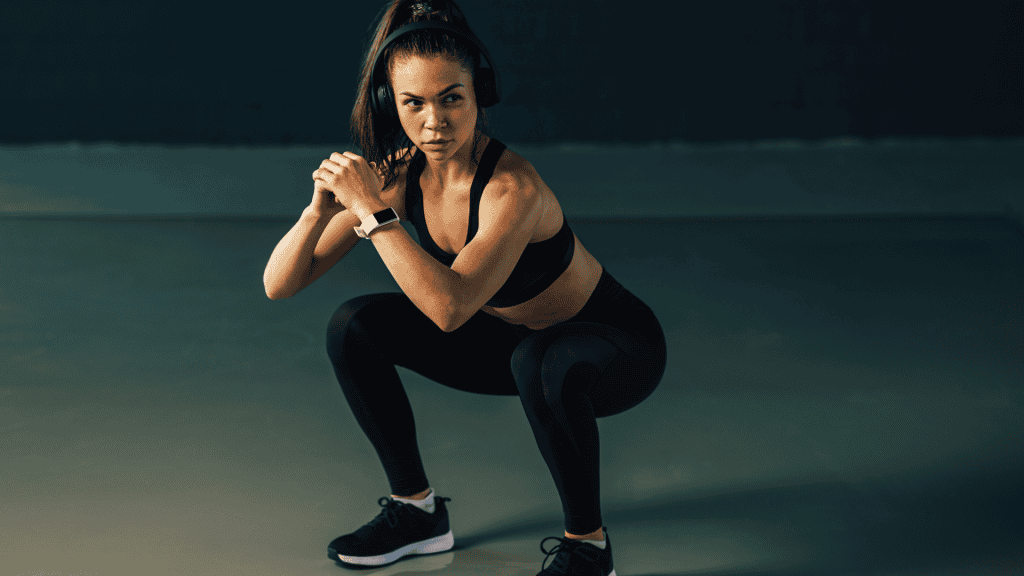
Start in a squat position.
For jump squats, explode up into a jump and land softly back into your squat. For a lower-impact version, skip the jump and just do a quick push through your toes at the top, lifting your heels in a fast calf raise.
Either way, this move adds power and speed, making your legs stronger and more springy over time.
Quick Quads and Calves Workouts to Try
Short workouts can still make a big impact. These simple routines target your quads and calves at the same time. Choose the one that fits your energy and schedule.
Whether you’re using just your body or adding dumbbells, these moves help build strong legs without dragging out your day.
15-Minute Bodyweight Burner (Home-Friendly)
Perfect for tight spaces and quick sessions, this one uses just your bodyweight.
Do 3 rounds:
- 12 Bodyweight Squats with Calf Raise
- 10 Step-Back Lunges with Heel Lift (5 each leg)
- 30-Second Wall Sit + 10 Calf Raises
- 20-Second Rest after each round
Stay steady and focus on clean form. Your thighs and calves will feel this fast.
20-Minute Dumbbell Routine (For Extra Challenge)
Add dumbbells to take things up a notch. This routine boosts strength while keeping it simple.
Do 3 rounds:
- 10 Goblet Squats (add a calf raise at the top)
- 10 Reverse Lunges with Heel Lift (5 each leg)
- 15 Standing Calf Raises (hold weights if you have them)
- 30-Second Wall Sit with Pulses
- 30-Second Rest after each round
Work at a pace that lets you stay in control, not rush through the reps.
5-Minute Add-On Finisher (For After a Walk or Leg Day)
A short set like this is great for ending your workout with an extra push.
Do 2 rounds:
- 10 Bodyweight Squats
- 10 Calf Raises
- 20-Second Wall Sit
- 10 Low-Impact Calf Jumps or Quick Heel Lifts
- 20-Second Rest after each round
It’s quick, simple, and just enough to light up those legs before calling it a day.
How to Get the Most Out of Your Quads and Calves Training
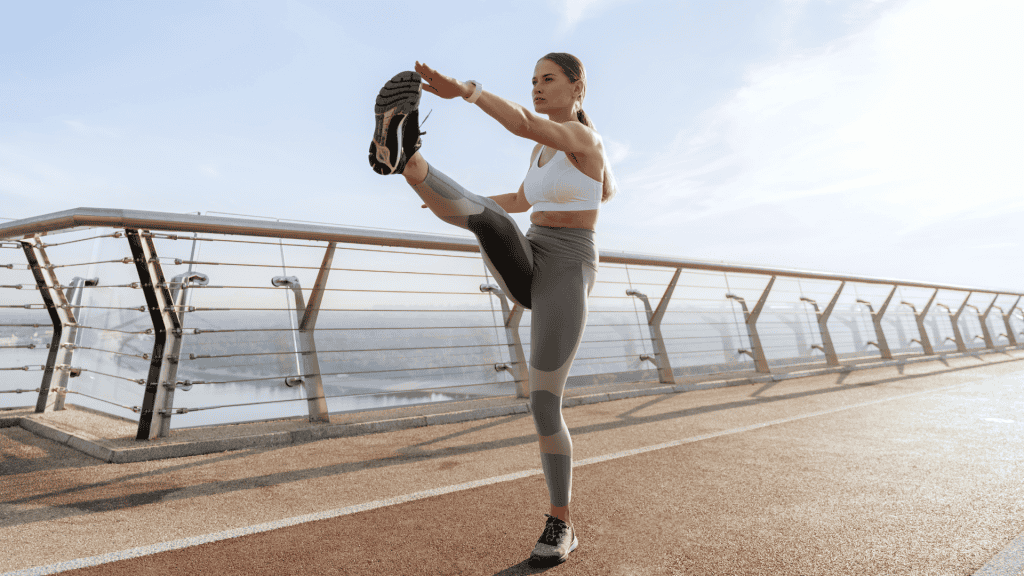
Getting the best results from your leg workouts isn’t just about doing more reps or lifting heavier weights. Instead, focusing on how you move, warm up, and recover can make all the difference.
By paying attention to a few key details, you help your muscles grow stronger while staying safe and comfortable.
First, stretching your legs before a workout helps your muscles get ready to move.
For example, light moves like leg swings, ankle circles, or walking lunges can wake up your quads and calves.
After your workout, it’s important to take time to cool down with simple stretches. Holding a standing quad stretch or a calf stretch against the wall for 20 to 30 seconds each can help your legs recover faster and feel less sore later.
When it comes to calf-focused moves, going slow and steady works better than rushing.
Bouncing through reps or hurrying to finish only makes it harder to control your muscles. However, pausing at the top of each calf raise and lowering down slowly can make each rep more effective.
You’ll also want to watch your form during every move.
For squats and lunges, keep your knees in line with your toes and avoid letting them cave in or move too far forward. For your ankles, keep your heels flat on the ground when needed and avoid turning your feet outward.
Using proper form not only keeps your joints safe, but also helps your muscles work as they should.
Finally, if your calves cramp or your quads tighten up during a workout, take a moment to pause and shake it out.
Sometimes, cramping means your body needs more water or a muscle has worked too hard. Try massaging the tight area and stretching gently. After that, ease back in, or end your session if things still feel off.
Progress is important, but listening to your body is what keeps you moving forward safely.
Common Quads and Calves Workout Mistakes to Avoid
Getting stronger legs is about more than just working hard. How you plan your workouts and how you move both make a big difference.
Paying attention to a few common mistakes can help you get better results and avoid setbacks along the way.
One common issue is focusing only on quad-heavy moves like squats and lunges.
While these exercises do help build the front of your thighs, your calves can end up left behind.
Over time, this can throw off your balance and make your legs feel uneven. Instead, be sure to mix in calf-specific moves so both areas grow together.
Another mistake is rushing through calf raises.
Yes, it feel good to finish quickly, BUT bouncing up and down too fast means your muscles don’t get the full benefit. Instead, slow it down, pause at the top, and lower your heels with control.
That small change is how you build real strength, not just momentum.
Some people forget to stretch their calves after working out.
Skipping calf stretches might not seem important at first, but tight ankles or stiff lower legs can start to show up during the day. Just like you stretch your quads and hamstrings, your calves need care, too.
Try a wall stretch or towel pull to keep them loose and ready to work.
Finally, training your legs too often without enough rest can backfire.
Sore legs every day is not a sign of progress; instead, it’s your body’s way of asking for a break. Muscles grow and get stronger when they have time to rest, not just when they move.
For the best results, space out your leg workouts and let your body recover between sessions.
Your Journey to Stronger Legs Begins Now
No matter your starting point, this quads and calves routine fits every fitness level. The moves are straightforward, the workouts are quick, and each one builds real strength in your thighs and lower legs.
As your legs get stronger, daily activities like walking, climbing stairs, or even balancing in your favorite shoes start to feel easier.
Begin by choosing one workout from this guide and giving it a try. There’s no need to chase perfection or go all out every time. Instead, pick a pace that feels comfortable and focus on showing up consistently.
Little by little, you’ll notice your legs feeling steadier and more powerful.
So keep moving forward, stay patient, and celebrate each small win. Strong strides begin with simple steps—your legs are ready for it!
Train Your Legs the Smart Way
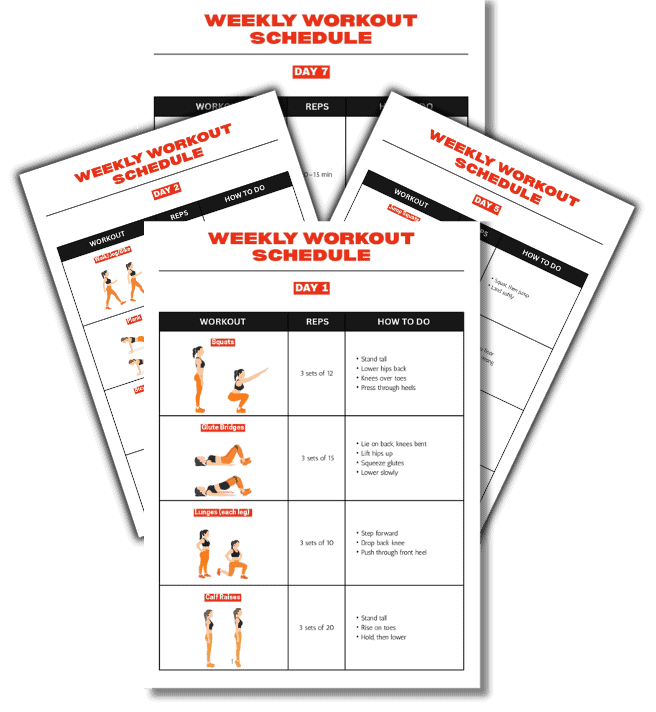
Strong legs make everything easier—walking up stairs, keeping balance in heels, or powering through a busy day. But strength doesn’t come from random workouts.
It comes from a plan that keeps your quads and calves working together week after week.
That’s exactly what you’ll find inside the Free Weekly Workout Schedule.
It gives you a clear weekly framework that blends lower-body strength moves with cardio and recovery, so your legs get stronger without extra guesswork.
Instead of trying to figure it out on your own, you’ll have a simple path that shows you when to push, when to recover, and how to stay consistent no matter how busy life gets.
1. How often should I train my legs?
Two to three times a week is a good place to start. That gives your muscles time to get stronger and recover between workouts.
2. Can I do calf workouts every day?
Calves can handle more frequent work, but they still need rest. Try adding them two to four times a week and see how your legs feel.
3. Why don’t I feel my calves during the workout?
You might be rushing through the moves. Slow down and focus on the squeeze at the top of each rep. Try pausing when you lift your heels to get a better burn.
4. Do I need to do cardio too?
Cardio helps your heart and adds more movement to your week, but it doesn’t replace strength training. You can do both, or rotate them across the week.
5. Will these moves help with knee or ankle pain?
Stronger legs can support your joints and ease pain over time. Just be sure to use good form, move slow, and stop if anything hurts.










